
The DevRel initiatives you should implement vary depending on your company’s or service’s stage. There is no one-size-fits-all approach to DevRel. However, it’s crucial to always consider whether these initiatives align with the goal of “building relationships with developers.” Simply hosting events or writing blog posts without considering engagement would not constitute true DevRel, as it only focuses on broadcasting information.
When considering your service’s stage, it’s helpful to be aware of the product lifecycle. The product lifecycle categorizes the period from market introduction to withdrawal based on market response. This lifecycle consists of the following five stages:
Let’s explore how these stages relate to DevRel strategies.
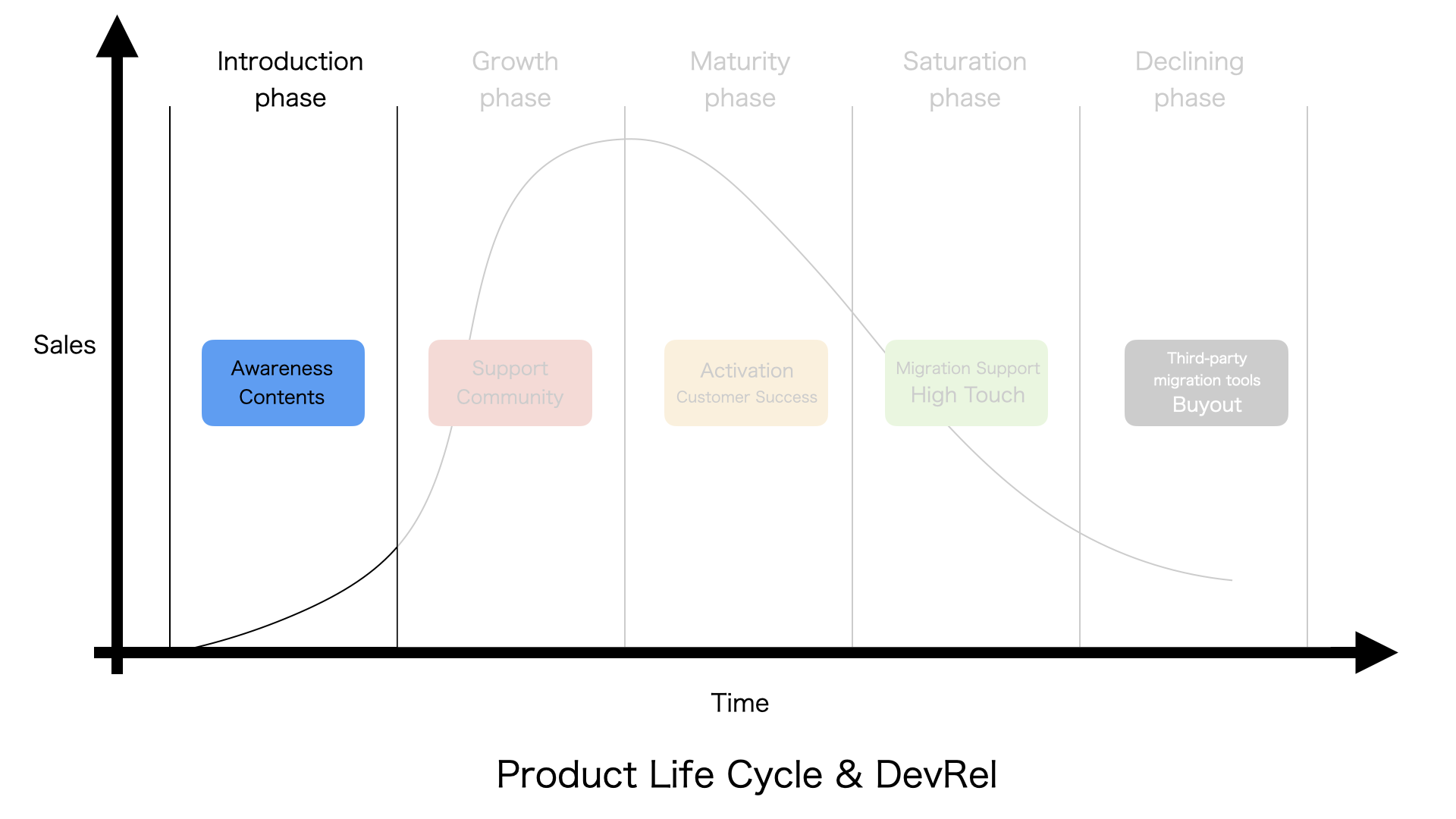
The introduction stage is the phase immediately after a product’s market launch. In other words, this is when most developers are unaware of the product. During this phase, raising awareness is the top priority. Therefore, initiatives like events and blog posts become crucial.
Key initiatives during this stage include:
For example, it’s premature to consider user communities at this stage because there aren’t enough passionate fans to form the core of such communities. If you do host events, it’s better to organize them internally.
Also, it’s advisable to hold off on conference sponsorships or booth exhibitions at this stage. Increasing users when the product still has issues or lacks comprehensive documentation could harm the product’s reputation. While gaining users is important, it’s crucial to strengthen your foundation first.
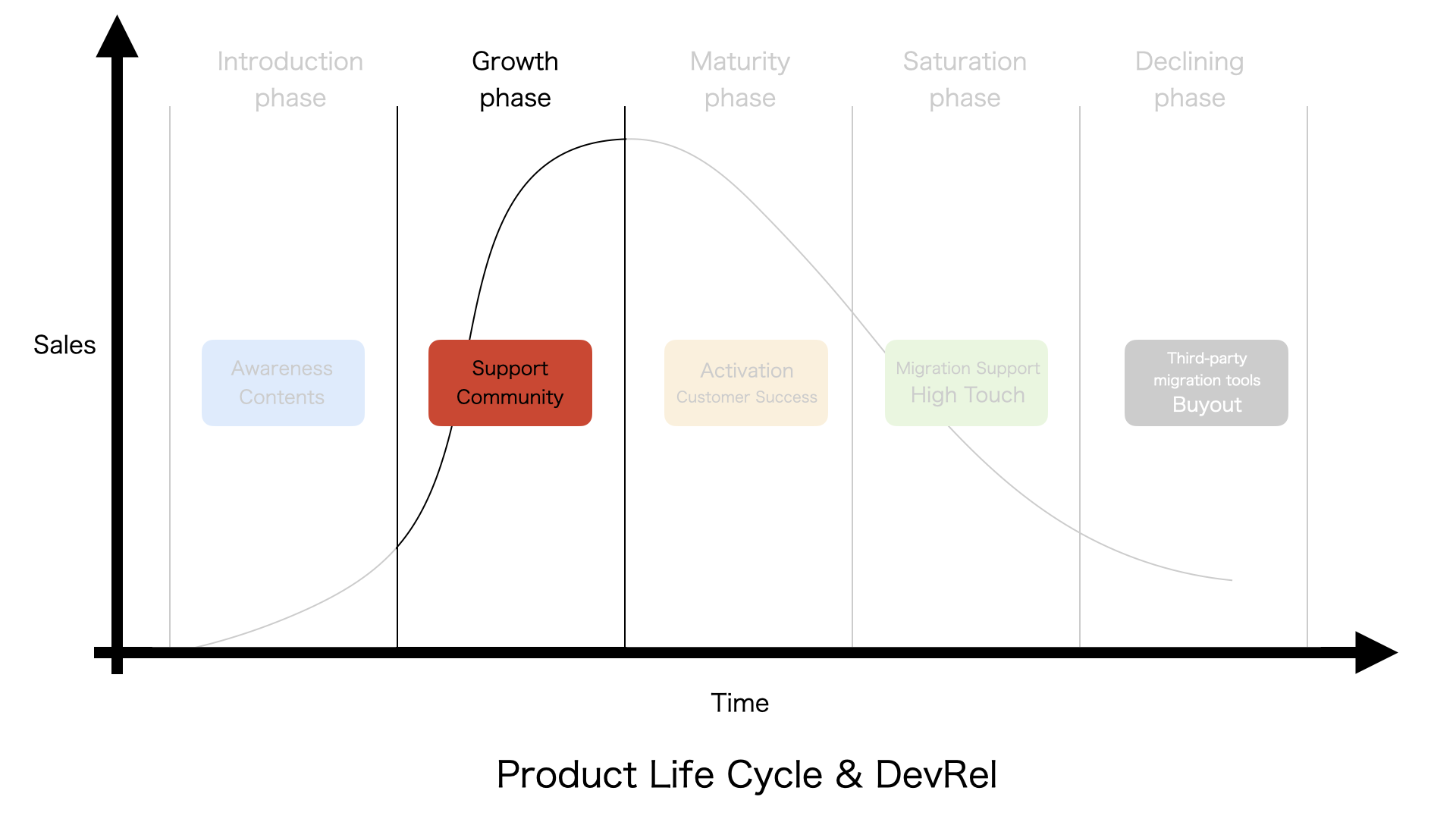
The growth stage is when the product begins to gain market traction. At this point, product awareness has increased, but the user base is still small. Therefore, initiatives to increase product adoption become crucial.
To create a user-friendly service, it’s essential to gather user feedback and incorporate it into development. This requires establishing support forums and chat channels where users can reach out.
As early adopters gather, passionate fans emerge. These users should be the foundation for building a user community. User communities serve not only as platforms for user interaction but also as important spaces for developer-user engagement.
Key initiatives during the growth stage include:
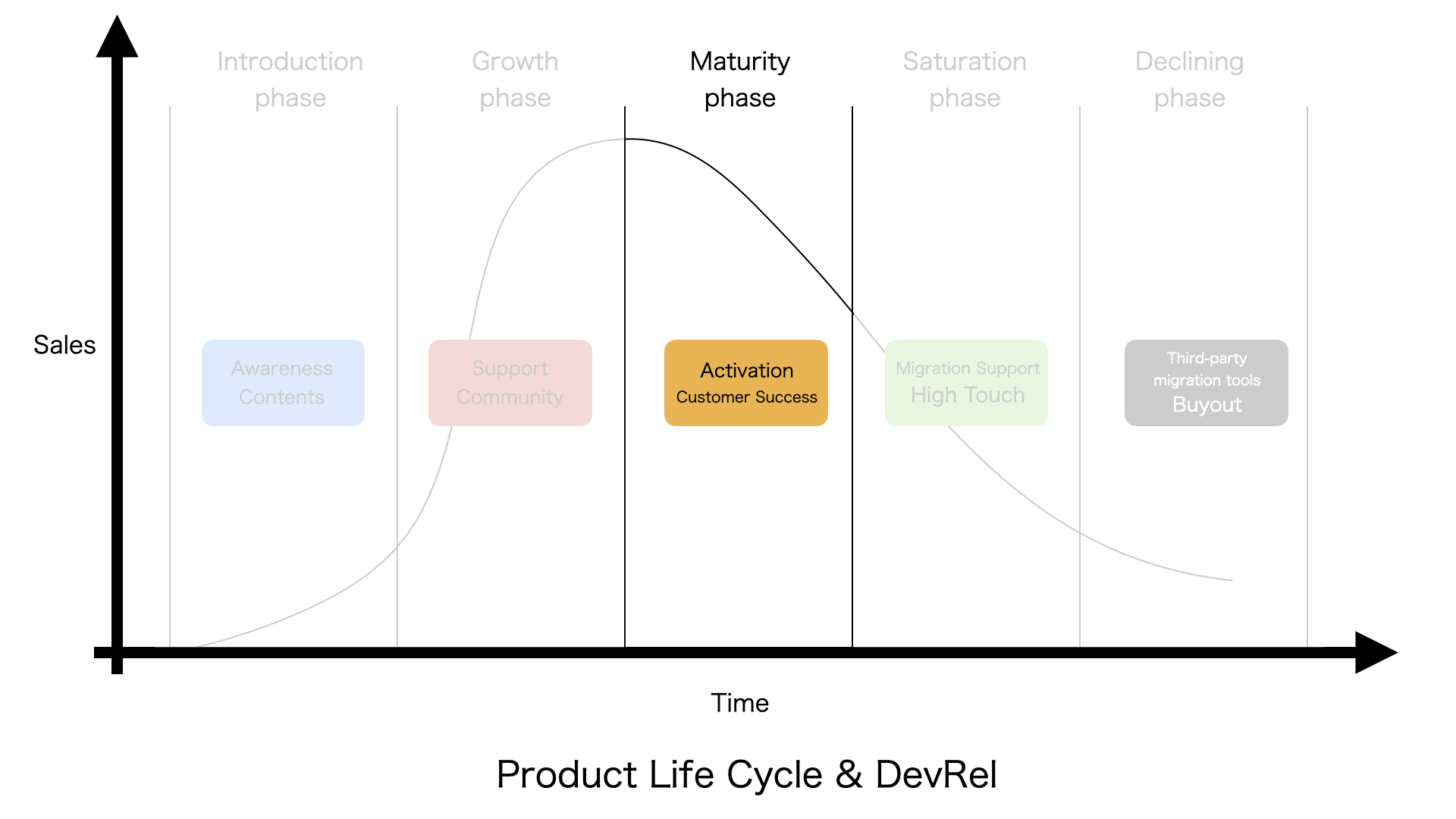
The maturity stage is when the product has gained market penetration and user numbers are growing. During this phase, maintaining existing users becomes crucial. Therefore, initiatives to prevent user churn are important.
Additionally, the product needs to generate profit. This requires providing support for paid users and implementing customer success programs. The user base will gradually shift from those comfortable with open communication channels to larger enterprises requiring more comprehensive support.
Key initiatives during the maturity stage include:
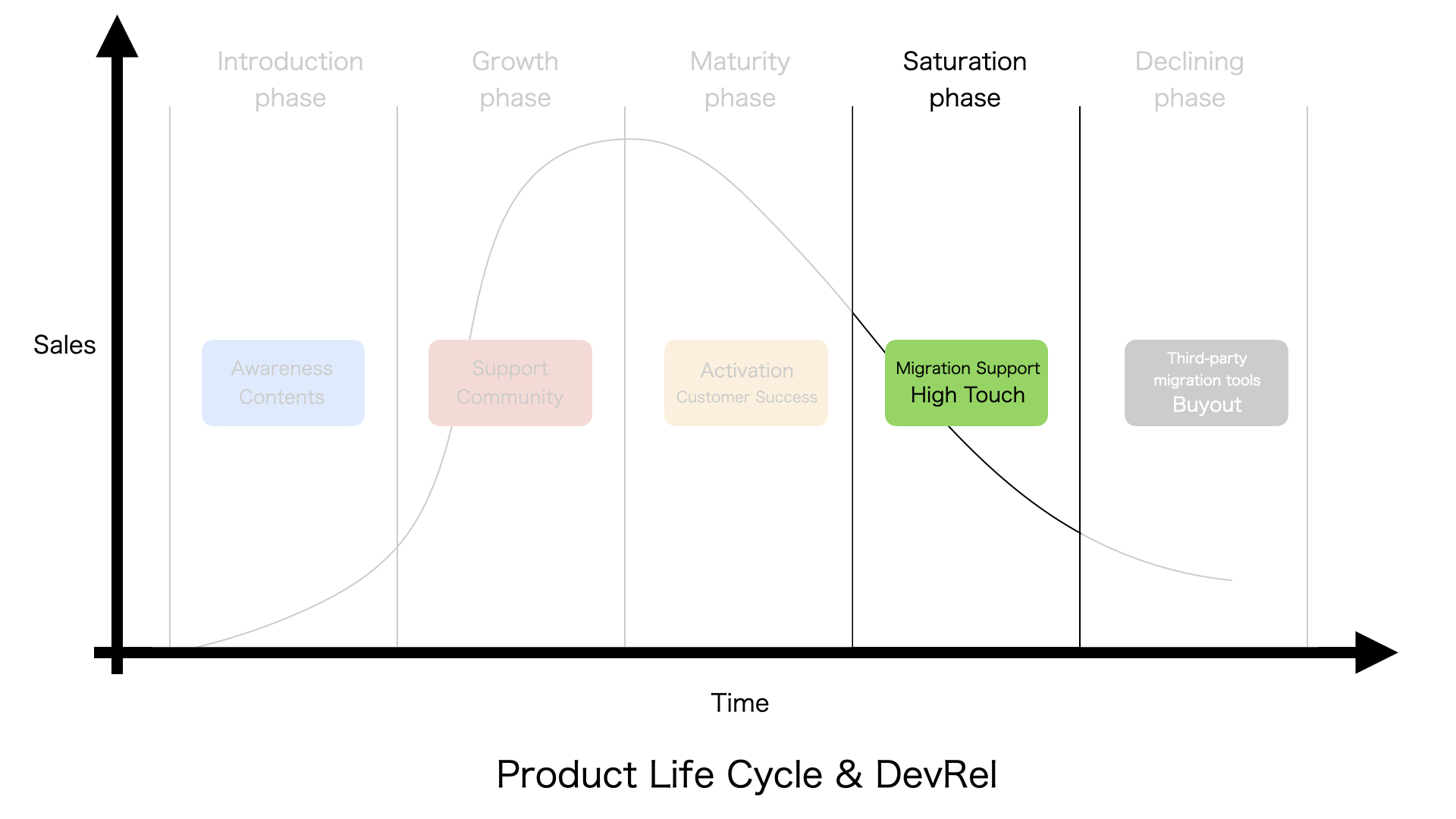
The saturation stage is when product adoption begins to plateau. During this phase, similar services to your product will likely emerge. Some players may be forced to withdraw from the market due to competition. It becomes crucial to effectively acquire users from these competitors.
Additionally, publishing market information can help establish a favorable position in the market. Of course, if there are already dominant competitors, switching to a niche strategy or aiming for second place can be effective approaches.
Key initiatives during the saturation stage include:
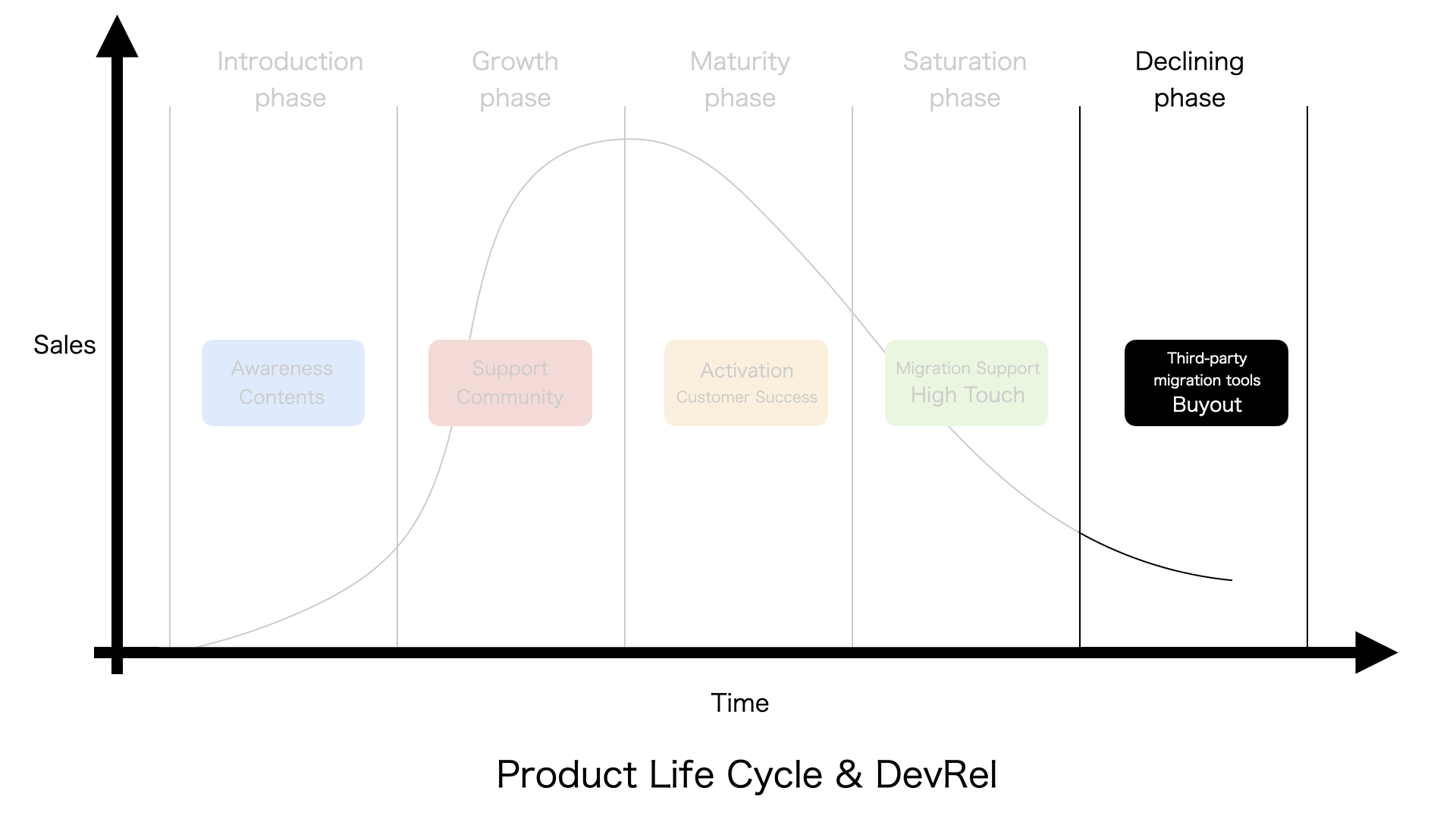
The decline stage is the final phase of the product lifecycle. At this point, the market is shrinking, and service closure or withdrawal should be considered. Ideally, you should avoid reaching this stage by extending the maturity and saturation stages.
If service closure becomes necessary, proceed with caution. Poor execution of service withdrawal can negatively impact other company initiatives and damage user trust in future service development.
Key initiatives during the decline stage include:
DevRel typically excels during the introduction to growth stages, as these phases have marketing budgets and active users. However, with nearly 30 years since the internet’s emergence, many services have entered maturity. Even smartphones could be considered in the saturation stage.
While keeping up with new services is important, it may not be sufficient for DevRel value. As services mature and saturate, it’s crucial to consider your service’s stage when planning initiatives to provide meaningful value.
MOONGIFT supports your DevRel & developer marketing in the Japanese market. If you’re interested, please contact us.
You will receive news and updates about DevRel via email.